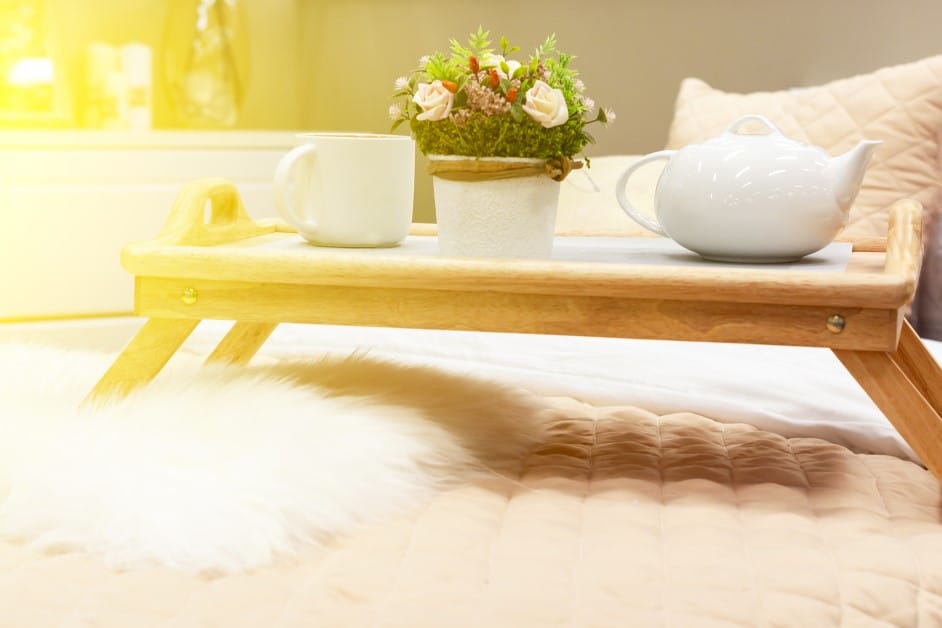
My Wood Table Is Faded from the Sun: What Should I Do?
Have a sun-damaged wood table? Learn here the step-by-step DIY solutions to restore the color of your favorite wooden furniture.
By:
The Good Home Daily
Posted on October 7, 2025
There’s nothing quite as disappointing as seeing your cherished wood table or furniture fade from the sun. What was once warm and vibrant now looks dull, uneven, and far less inviting than before.
A faded wood table often starts as a change so subtle you hardly notice. By the time it becomes obvious, the sun has already done its work, leaving your furniture looking tired and worn.
But here’s the good news: you can revive sun-bleached pieces even without a carpentry degree.
Before you think about hauling your beloved table to the curb, know that restoration is within reach. This guide will walk you through simple yet effective methods to repair sun-faded wood and bring back its natural beauty.
Why Does Wood Fade in the Sun?
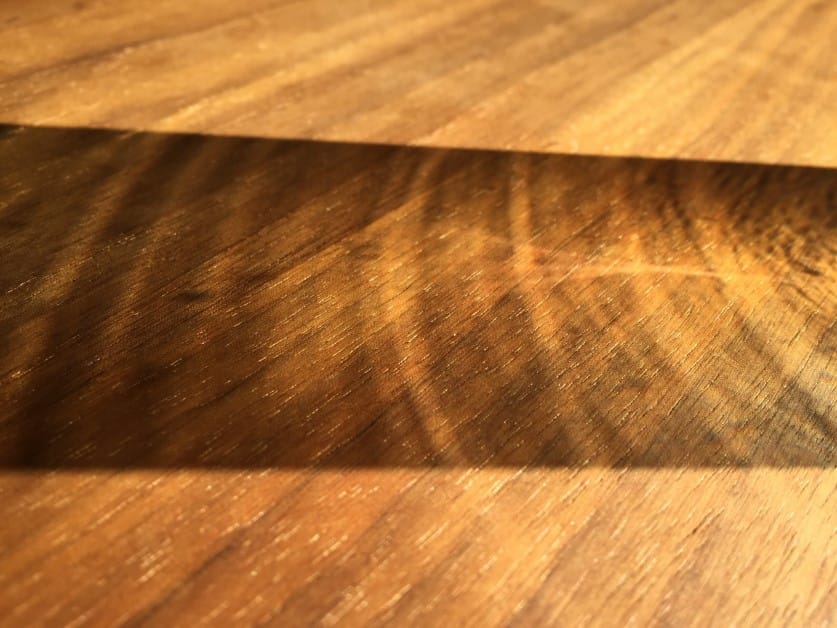
Letting sunlight into your home instantly makes a space feel brighter and more inviting. It sets the mood, warms the room, and highlights your interior’s natural beauty. However, the same sunlight that brightens your home can also fade wood furniture over time.
So, why does the sun damage wood furniture?
It’s not simply a bleaching effect like laundry left in the sun; it’s a chemical process called photodegradation, which specifically targets one of the wood’s core structural components: the lignin.
Lignin is a natural substance that acts like a glue, holding wood fibers together and giving furniture its strength and warm tones. The problem is that lignin is highly sensitive to light. Once exposed, it begins to deteriorate, leaving the surface faded, uneven, and dull.
The main culprit is Ultraviolet (UV) radiation. In fact, even though UV light makes up only about 5% of sunlight, it has a powerful impact on lignin and speeds up fading.
But UV rays are not the only factor.
Research from the USDA Forest Products Lab found that even violet light, part of the visible spectrum our eyes see as purplish-blue, can trigger photodegradation deeper beneath the surface.
This explains why wood placed near bright windows can fade over time, even when not in direct sunlight.
Keep in mind that apart from natural sunlight, indoor lighting, especially strong LEDs and halogens, also emit violet light that can contribute to long-term wood fading.
Beyond light, environmental conditions matter, too. Heat, humidity, and fluctuating moisture levels speed up the fading process. The Florida Solar Energy Center highlights that sunlight filtering through glass can still cause fading in tables, chairs, and other wood pieces
Which Woods in the Philippines Are More Susceptible to Sun Damage?
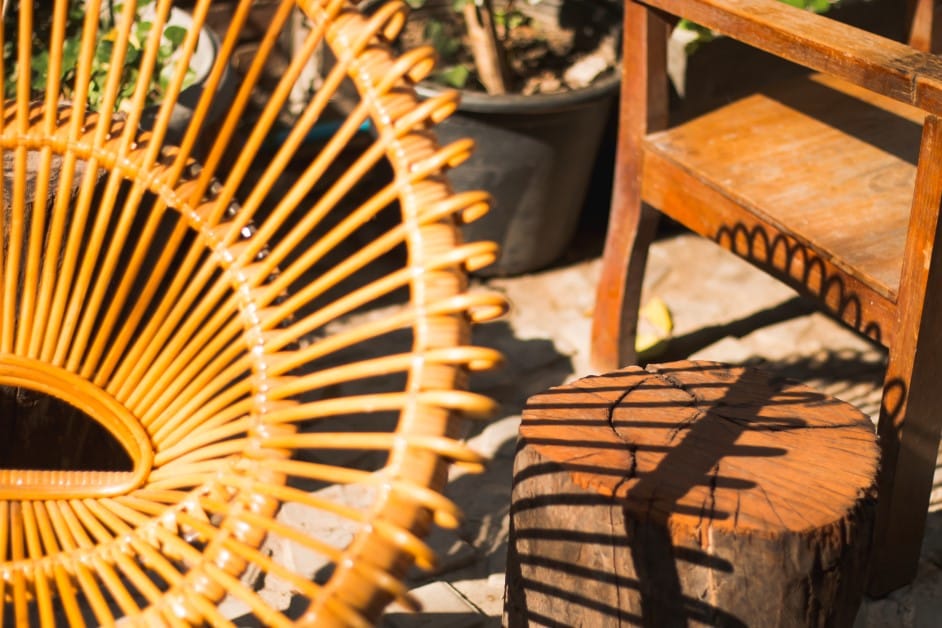
Not all woods fade at the same rate. Some hold color better, while others lighten or darken quickly under sunlight. Below is a guide to common wood types used in Philippine furniture and how they respond to sun exposure:
Wood Species
Sunlight Susceptibility
Reaction to Sunlight
Narra
Low to Moderate
Initially changes color (photo-oxidation) but then stabilizes, developing a rich, deeper patina.
Mahogany (True)
Moderate
Darkens over time, developing a deep, rich reddish-brown patina. High-dimensional stability.
Pine
High
Quickly yellows or fades; sensitive to light
Acacia
Moderate
Can fade or warp unevenly if not sealed properly
Yakal
Low
Extremely durable; resists decay and UV damage better than most. The outer layer slowly grays (silvery patina) if unfinished.
Molave
Low to Moderate
Highly resistant but yellows or dulls over time. Sealing and conditioning are needed.
Tanguile
High
Lightens, fades, and can lose richness of tone under prolonged sunlight
Kamagong
Low
May darken but maintains contrast; best out of direct sunlight
3 Ways to Revive Sun-Faded Wood Furniture
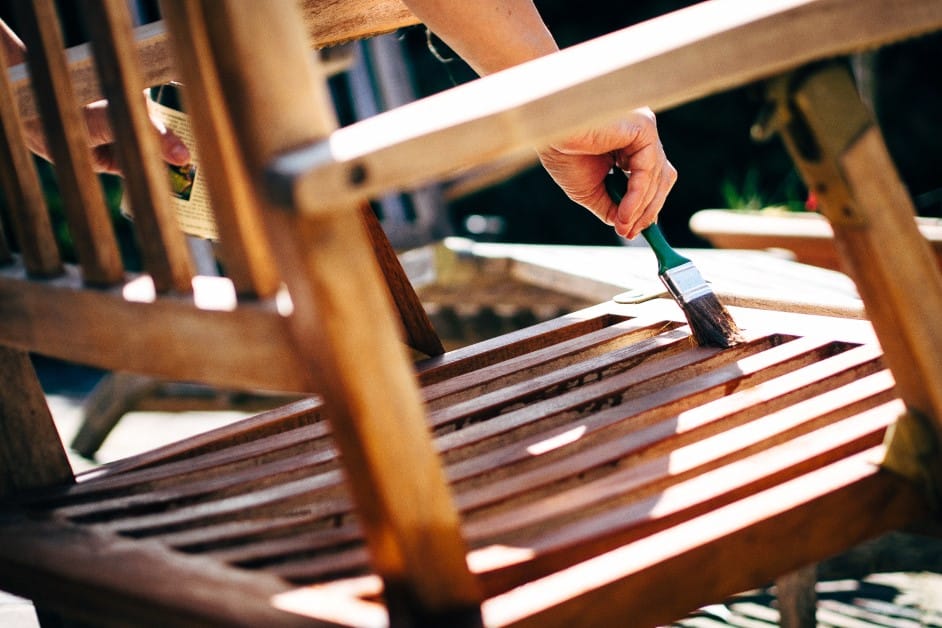
Most wood furniture fading is reversible. Here are three effective methods to restore your wood furniture color, depending on how severe the damage is:
1. Rejuvenating with Oil or Wax (For Light Fading)
For minor fading, sometimes all your furniture needs is a little tender loving care. Oils and waxes can help restore moisture and bring back some of the natural color.
How to Revive Your Sun-Faded Wood Table with Oil or Wax:
- Clean the wood surface thoroughly with a gentle cleaner. Be sure to wipe dry after.
- Apply your preferred oil or wax using a soft cloth. You can use mineral oil, linseed oil, wood wax, or even a colored beeswax polish.
- Let it soak for a few hours or overnight (check the label instructions).
- For highly faded areas, a second, thin coat may be applied 24 hours later.
- Optional: Finish with a furniture polish to add extra shine and a slight protective layer.
This method is perfect for minor sun damage or as part of routine maintenance.
This method is perfect for minor sun damage or as part of routine maintenance.
2. Correcting Uneven Fading with Light Sanding or Chemicals (For Patchy Sun Damage)
When your wood table has uneven discoloration, light sanding or a color-restoring chemical can help even out the surface.
Ways to Restore Wood Furniture Color and Fix Uneven Fading:
- Clean the surface to remove dirt and oils.
- Lightly sand faded areas using fine-grit sandpaper. Be careful not to remove too much wood.
- For stubborn spots, apply a wood color restorer or chemical fading corrector (follow product instructions).
- Wipe clean and let the wood dry completely.
- Apply a thin layer of oil or wax to nourish the wood.
- Once the stain is dry, apply a clear top coat. Use a top coat that ideally contains UV inhibitors to prevent future fading from the tropical sun.
This approach works well for moderate sun damage. It helps fix patchy or uneven fading without full refinishing.
3. Full Refinishing (For Heavy Sun Damage)
For heavily sun-damaged furniture, a full refinishing restores the original color, smooths the surface, and adds long-term protection.
Steps to Revive Heavily Sun-Damaged Wood Furniture:
- Remove old finishes using sandpaper or a chemical stripper.
- Sand the entire piece smoothly: start with medium-grit, finish with fine-grit.
- Clean off all dust thoroughly.
- Apply a wood stain to refresh the original color. Let it dry according to product instructions.
- Apply 2-3 coats of your chosen topcoat, such as polyurethane, lacquer, or varnish, containing UV-inhibitors.
Full refinishing takes more time but can make your furniture look almost new again while protecting it from future sun damage.
Protect Your Wood Furniture from Future Sun Damage
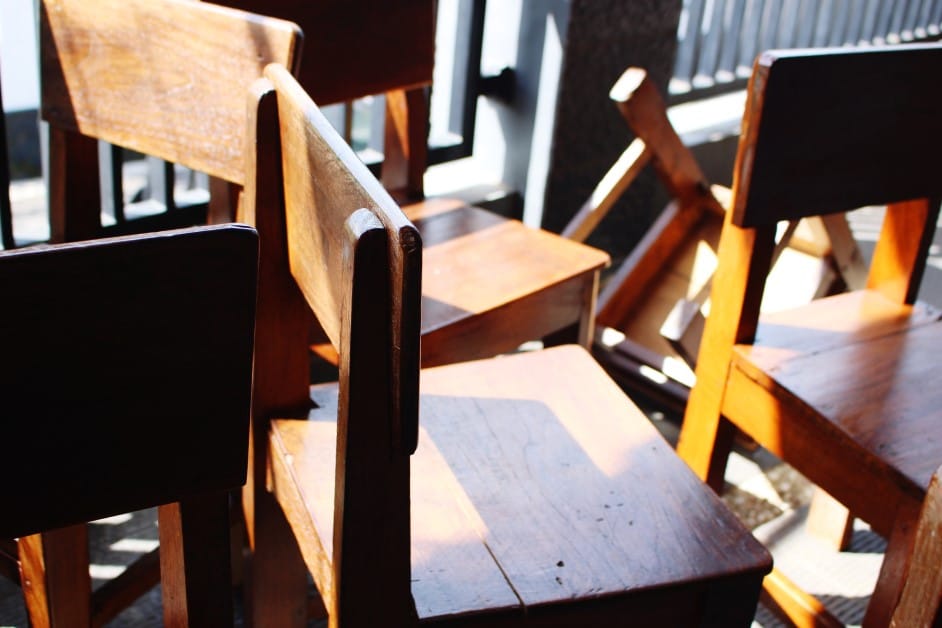
Once you’ve revived your sun-faded wood furniture, the next step is to protect it from future fading. A simple first step is placement. Keep furniture out of direct sunlight whenever possible, or rotate pieces occasionally so one area isn’t constantly exposed.
Another easy way to reduce sun damage is through window treatments. Curtains, blinds, or UV-filtering films can block harmful light while still letting your space feel bright and inviting.
You can also reinforce protection by applying UV-protective finishes, sealants, or wax periodically. These not only maintain color but also nourish the wood, keeping it healthy.
Final Thoughts
Sunlight will always brighten a home, but it doesn’t have to dull your furniture. By following these restoration methods and prevention tips, your wood pieces can stay vibrant, inviting, and full of life for years to come.

